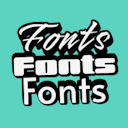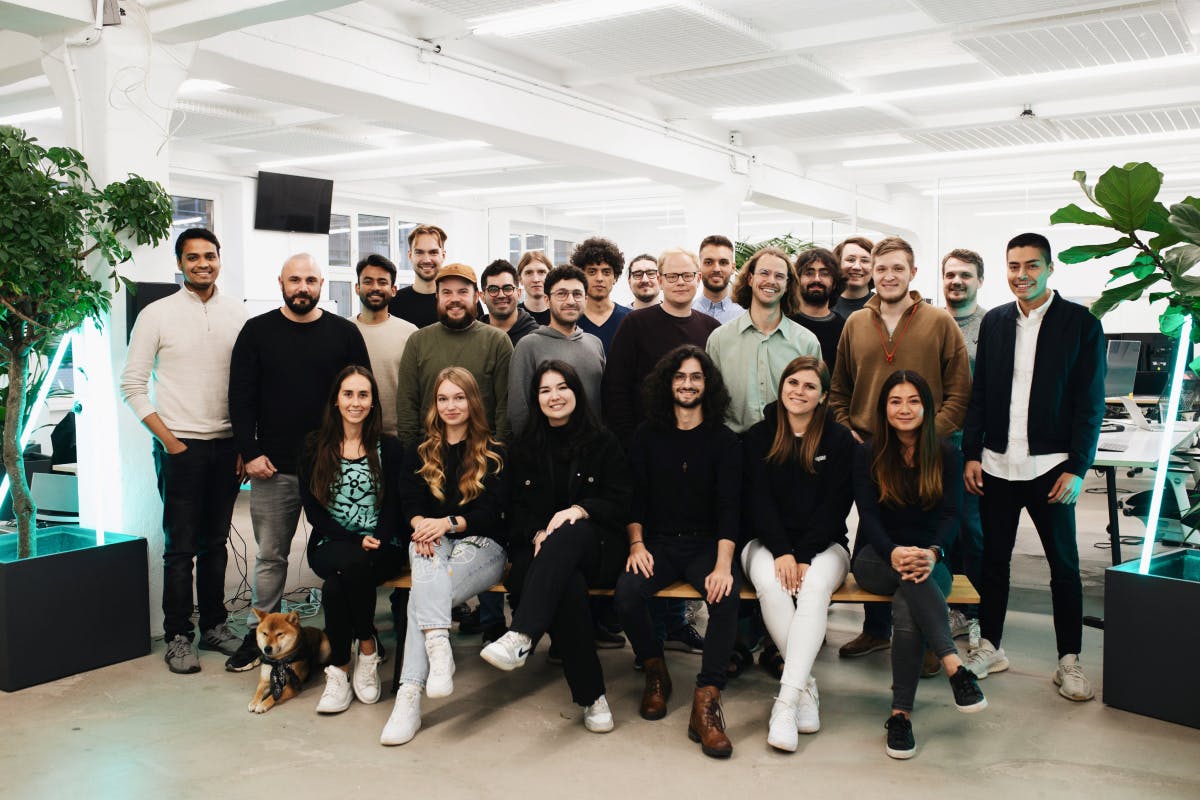Product
Templates
Resources
Company
Home
Blog
Design
Mastering design thinking: 7 stages every graphic designer should use
Mastering design thinking: 7 stages every graphic designer should use

So what is design thinking, exactly? At its core, it’s a human-centered design framework that helps you find innovative, practical solutions to real-world problems.
Design thinking has completely changed the way designers tackle problems. It’s not just a process—it’s a mindset. And for graphic designers who are juggling client expectations, tech limitations, and tight deadlines, this approach can be a game-changer.
Think of it as the sweet spot between what users want, what’s possible with current technology, and what makes business sense. It’s used by everyone from scrappy startups to giants like Apple and Nike. It's taught at places like Stanford and Harvard.
The impact is highly measurable. A striking example: IBM, after fully implementing design thinking across their product teams, saw dramatic improvements—design time reduced by 75%, time to market cut in half, and ROI increased by 301%.
Those numbers show that thoughtful, user-centered design isn’t just good for users—it’s great for business too.
The reason it works? Because it puts empathy front and center. Instead of designing for people, you design with them. You observe, you listen, you understand their pain points.
Then you build from there. That’s what makes design thinking such a powerful approach in everything from branding projects to UI/UX design, marketing campaigns, and even social impact work.
In this article, we’re going to walk you through the design thinking process, highlight the 7 stages of design thinking, and break down how this framework can transform the way you create.
If you’ve ever asked yourself, “What is design thinking?” or wanted to see design thinking examples in action, you’re in the right place.
Table of contents
- What is design thinking?
- The 7 stages of the design thinking process for graphic designers
- 1. Empathize – Understanding people’s needs
- 2. Define – Framing the right problem
- 3. Ideate – Generating creative ideas
- 4. Prototype – Bringing ideas to life
- 5. Test – Learning from feedback
- 6. Implement – Delivering the solution
- 7. Iterate – Refining and evolving the solution
- Why design thinking matters for graphic designers?
What is design thinking?
Design thinking is about designing things that look good while making sure they work well and feel right for the user.
It blends logic and imagination. You don’t need to follow it like a rigid checklist—it's more like a roadmap with detours you can take depending on your project.
As Tim Brown, Executive Chair of IDEO, puts it, it’s “a human-centered approach to innovation that draws from the designer’s toolkit to integrate the needs of people, the possibilities of technology, and the requirements for business success.”
If you’ve ever had to design a logo that makes a small business stand out—but also scales well across 20 different formats and still looks amazing on a phone screen—you’ve already felt that balance. It’s about juggling desirability, feasibility, and viability all at once.
What makes design thinking so compelling is how it evolves with the tools and challenges of today’s industry. Take AI, for example. It’s not replacing the creative process—it’s expanding what’s possible.
Tools powered by artificial intelligence are helping designers move faster, test ideas sooner, and respond to user needs with more flexibility than ever. Discover the impact of AI on the design industry and its role in modern workflows to see how this fits into a design-thinking mindset.
Now, depending on who you ask, design thinking stages might include five, six, or even seven steps.
The Stanford d.school model gives us five core stages: Empathize, Define, Ideate, Prototype, and Test. Others add Implement and Iterate to make it a full-circle loop. For graphic designers, that’s the model we’ll use in this guide—because if you’re not designing and refining in the real world, what’s the point?
In the next section, we’ll unpack each of the 7 design thinking stages—with practical takeaways, insights from top designers, and examples that’ll feel very familiar if you’ve ever opened up Illustrator and thought, “Okay, where do I even start?”
The 7 stages of the design thinking process for graphic designers
Design thinking is especially useful when the brief is vague, the audience is broad, or the goals keep shifting. Below, we’ll unpack each stage through the lens of visual design, with real-world applications that speak directly to our field.
1. Empathize – Understanding people’s needs

The first step of design thinking is all about empathy – genuinely understanding the people for whom you’re designing.
This means going beyond assumptions and observing, listening, and putting yourself in the users’ shoes. As the Interaction Design Foundation notes, “The first stage of the design thinking process focuses on user-centric research... gain an empathic understanding of the problem you are trying to solve.”
In practice, designers might conduct interviews, surveys, or field observations to learn about users’ behaviors, motivations, and pain points. The goal is to uncover insights and emotions that wouldn’t surface without engaging directly with real people.
Let’s say you’re redesigning product packaging for a health brand. You observe that many customers hesitate when picking between similar-looking items. Subtle design choices—like color cues—can guide those decisions without a word.
That’s where design thinking meets visual psychology. Understand color relationships and their impact on visual communication to make more intuitive, empathy-driven decisions.
Empathizing often requires humility and curiosity – as the Darden School of Business describes it, taking an ethnographic approach and walking through the customer’s experience to discover “unarticulated needs.”
This step sets the foundation for everything that follows: if you deeply understand the audience’s context and problems, you’re far more likely to design something that truly connects with them.
How to Empathize: Engage with your end-users or clients through research. Ask open-ended questions, observe them in context, and truly listen. Suspend your own biases and be ready to learn something unexpected. Empathy isn’t a one-time task; it’s an ongoing mindset throughout the project.
This is how it applies in our field: Imagine you’re tasked with designing a brand logo for a local café. Instead of jumping straight to sketching logos, a design-thinking approach would have you meet the people first – talk to the café owners about their story and values, chat with regular customers about what they love, maybe even spend a morning observing the café’s atmosphere. These insights might reveal that the café is seen as a cozy community hub, which could inspire a logo that emphasizes warmth and togetherness.
Similarly, for a packaging design project, you might observe shoppers in a store: how do they pick up and interact with products? What draws their eye? Such empathy work uncovers subtle preferences (e.g. easy-open packaging for older customers, or eco-friendly material concerns) that inform your design decisions.
2. Define – Framing the right problem

After gathering rich insights in the empathize stage, the next step is to define the problem clearly. This means distilling all your observations and data into a coherent problem statement or a clear definition of the challenge.
In design thinking, we call this framing the design challenge in a human-centered way. You’re essentially asking: What is the real need or problem we are trying to solve for our user?
During the Define phase, you synthesize your findings and identify themes or patterns. You aim to articulate a Point of View (POV): an actionable problem statement that includes the user, their need, and why it’s important.
For instance, instead of a vague goal like “improve the website,” a well-defined POV might be “Busy parents (user) need a quick way to find healthy dinner recipes (need) because they have limited time after work (insight).”
A good problem definition is focused, human-centered, and inspiring. It should be narrow enough to be solvable, but open-ended enough to allow creative solutions. Often, teams use “How Might We” questions to reframe insights into opportunities (e.g., “How might we make it easier for busy parents to cook healthy dinners?”).
Crucially, defining the problem is about making sure you’re solving the right problem. Many failed designs result from jumping to solutions before understanding the real issue. By clearly defining the problem, you prevent wasted effort and set a clear target for your creativity.
Suppose from your café research you learned customers love the community vibe but find the café’s current visuals outdated. In the Define stage, you’d frame the challenge: e.g., “Our café’s loyal customers (user) need to feel the brand reflects the cozy, modern community vibe they experience in-store (need), so that the logo and branding connect emotionally with them (why).” This sharp definition moves you away from just “make a new logo” to a more meaningful goal.
For a packaging project, your empathy research might have revealed that people struggle to open a certain jar. The defined problem could be, “Health-conscious consumers (user) need a package they can open easily and reseal (need), because they want to use the product on the go without frustration (insight).” A precise definition like this will focus your design on solving that exact pain point.
As you shape your Point of View and frame the right problem, it helps to be grounded in timeless design fundamentals. While design thinking zooms in on human needs, strong visual work still leans on core design rules. If you need a refresher, explore the 12 fundamental principles of design to enhance your creative process—from balance to contrast—so your solutions not only solve problems but look sharp doing it.
3. Ideate – Generating creative ideas

With a clear problem definition, the fun part begins: Ideation, where you generate a flood of ideas and potential solutions.
Here, the goal is to explore a wide solution space – it’s all about creativity, imagination, and even a bit of daring. In Ideation, quantity beats quality (at least initially). You want lots of ideas, from the obvious to the wild.
Why? Because the first idea you think of is rarely the most innovative. By pushing past the familiar solutions, you increase the chance of hitting upon truly fresh, breakthrough ideas.
During ideation sessions (like brainstorming workshops), design thinking encourages a few key mindsets: defer judgment (no idea is immediately dismissed as “too silly” or “too impossible”), embrace wild ideas (sometimes the craziest concept sparks a practical gem), and build on others’ ideas (“yes, and…” instead of “no, but…”).
One famous example of ideation leading to innovation is how Airbnb’s founders, faced with a lack of bookings, brainstormed solutions and hit upon offering professional photography for listings.
This unusual idea (literally flying to hosts to take photos) doubled their revenue in a week – a creative solution that saved their business. The takeaway: by challenging assumptions (in Airbnb’s case, the assumption that a tech startup should only solve problems with code), ideation can reveal game-changing ideas.
It’s a highly collaborative phase – often, a cross-disciplinary team will ideate together since diverse perspectives produce richer ideas. “That’s the way we’ve always done it” thinking is actively challenged
By questioning assumptions, you free yourself to envision new possibilities.
Sometimes teams use creative prompts or techniques: sketching, mind-mapping, worst-possible idea, role-playing, etc., to spark ideas. The result is a collection of possible solutions to your defined problem. Among these will be the seeds of innovation.
Continuing our café branding example, ideation is where you sketch dozens of logo ideas, even the ones you’re unsure about. Perhaps you draw logos symbolizing community (hands, hearts, people gathering), others focusing on coffee elements, and some abstract marks with hidden meanings.
You might also brainstorm taglines, color schemes, and interior decor ideas that align with the vibe – nothing’s off-limits at this point. If you have teammates or the client with you, you’d invite them to brainstorm too.
4. Prototype – Bringing ideas to life

After narrowing down a handful of promising ideas from the ideation phase, the next step is Prototyping.
A prototype is basically a tangible draft of your idea – something you can show, test, and get feedback on. It doesn’t need to be a finished product or polished design at all; in fact, in design thinking, rough and rapid prototypes are encouraged.
The motto here is “build to think” – by creating a quick model of your idea, you can explore how it might work in the real world and identify issues early.
Prototypes come in many forms depending on the project: sketches, wireframes, storyboards, paper models, clickable digital mockups, faux landing pages, or even role-playing scenarios.
The key is that a prototype is something the user (or client/stakeholder) can experience or interact with. It moves the idea from abstract to concrete.
As Jeanne Liedtka notes, you don’t need a perfect or expensive prototype; even a simple storyboard or a rough draft can help others imagine the solution and provide input, and often “the incompleteness invites interaction”. In other words, a sketchy prototype can spur users to say, “I wish it could also do X,” which is exactly the feedback you want.
Prototyping also implicitly gives you permission to fail small and fast. If a prototype doesn’t work like expected, that’s a good thing – you’ve discovered a flaw cheaply, early, when you can still change direction.
This experimental mindset is vital. As the saying goes in design, “Fail early so you can succeed sooner.” Embracing that, you treat each prototype as a learning opportunity, not a final verdict on the idea.
Suppose one of your café logo concepts—say a stylized coffee cup handshake icon—seems promising. In the Prototype stage, you’d create some quick applications of it: a draft version of the logo in color, a mockup of it on a coffee cup, maybe a simple flyer or social media post using it.
You might also prototype two or three different top logo contenders this way. These aren’t final designs, just rough executions to visualize how each concept actually looks in real-life contexts. And as you're testing these early versions, it helps to know what actually makes a logo effective beyond visual style. Try Kittl’s AI Logo Generator to create memorable logos with purpose so you’re not just designing for looks—you’re designing for lasting impact.
For a packaging design, a prototype could be as simple as sketching the new package shape and then making a mockup with paper or a 3D print so you can hold it and see, for example, “Is it easy to grip and open?” If it’s a label redesign, you might print a draft label and stick it on a bottle to see its shelf impact. The aim is to have something testable.
5. Test – Learning from feedback

Once you have prototypes in hand, it’s time to test them with real users or stakeholders. The Testing stage is where you put your draft solutions in front of people, observe, and gather feedback.
The goal is to learn – to see what works, what doesn’t, and why. Testing often goes hand-in-hand with prototyping in an iterative loop: you create a prototype, test it, learn something, refine or create a new prototype, and test again.
Effective testing means watching and listening with empathy (back to step 1!). When users interact with your prototype, pay attention to their body language, their expressions, and their comments.
Where do they get confused or frustrated? What do they enjoy? Encourage honest feedback – sometimes testers may be polite, but you actually want to hear criticisms at this stage. It’s much better to find out a flaw or dislike now than after full implementation.
It’s important to approach testing with an open mind and resilience. As creative people, we can feel attached to our designs, but testing asks us to be ready to pivot.
Remind yourself that a prototype is not precious; it’s expendable. If users don’t respond well, that’s not a failure of you – it’s an insight. In fact, design thinkers are often happy when a test reveals a mistake because it guides them to a better answer.
This echoes a sentiment from renowned designer Paula Scher: “It’s through mistakes that you can grow. You have to get bad in order to get good.”
Testing can be done in many ways: User observation sessions, A/B tests, surveys, or informal feedback conversations. Sometimes, it involves metrics (did Version A or B perform better?), other times, it’s qualitative (which design did they feel more drawn to?). Often, new insights from testing will send the team back to redefine the problem or brainstorm new ideas – and that’s perfectly normal in design thinking.
Let’s say you present two logo prototypes to the café owners and a few loyal customers. You might do a simple test like asking them, “Which one feels more like our café, and why?” You watch their reactions as they look at the mockups.
Suppose they gravitate to the coffee cup handshake logo but say the font feels too formal – that feedback is gold. Or they might love the image but not realize it’s a coffee cup, indicating you need to tweak the design for clarity. You might also notice, for example, that when scaled down, one version becomes illegible (a practical insight). All these test findings will inform your next design iteration.
6. Implement – Delivering the solution

Up to the Testing stage, the focus is on exploration and refinement of ideas. Implement is the stage where the refined solution is finalized and launched into the real world.
In a sense, this is where “design thinking” as a formal process transitions into design doing – executing the chosen solution for people to use. Implementation means preparing the design for production, addressing practical considerations, and rolling it out to the market or audience.
For many design thinking frameworks, implementation is assumed as the follow-through after testing, even if not always listed explicitly. However, it’s important to plan this phase because a great idea on paper only matters if it actually sees the light of day and benefits people.
During Implement, teams work on the execution details: developers code the final app, printers print the finalized packaging, marketers schedule the campaign launch, etc.
It often involves collaboration with specialists and possibly encountering real-world constraints that need solving (manufacturing limitations, budget constraints, technical integration issues – these all might pop up and require minor iterations of the design).
Throughout implementation, staying true to human-centered insights is key. Design thinking doesn’t stop at a concept; it pushes to make sure the concept is carried through into a real, impactful result.
It’s also where the other aspects of Tim Brown’s definition come in – ensuring feasibility and viability.
We know our solution is desirable (we’ve tested it with users), but now we ensure it’s feasible to produce with technology and viable in terms of cost or business model (so it can be sustained). Tim Brown’s oft-cited criteria for successful innovation are desirability, feasibility, and viability – implementation is about nailing the last two without losing the first.
If the café logo testing went well and one concept emerged the winner (with some tweaks), the Implementation stage is delivering all the final brand assets. You’d finalize the vector logo artwork in high resolution, define the color palette and typography, and perhaps create a simple brand guideline.
Then the logo gets put on signage, menus, a website, and social media profiles – this rollout is part of the implementation. It might involve working with printers or a web developer to ensure the design appears as intended in all formats.
7. Iterate – Refining and evolving the solution

The final “step” is less a step and more a built-in mindset of the entire design thinking approach: Iteration.
We include it as the seventh element to emphasize that the process is cyclical, not linear.
After implementing a solution, you don’t simply declare victory and move on – you observe the solution in the real world, gather new feedback, and continuously improve it.
Iteration means being open to revisiting any of the previous stages as needed: maybe new user feedback post-launch sends you back to empathize and define a refined problem, or maybe you have a version 2.0 idea to ideate and prototype further enhancements.
Iteration is where the mantra “always be learning” comes in. Even a successful design can often be made better. And sometimes conditions change – users evolve, trends shift, technology opens new possibilities – so iterative thinking allows a design to stay relevant and effective over time.
This stage is also about scaling up what works and fixing what doesn’t on an ongoing basis. Many organizations build iteration into their workflow (e.g., agile development sprints in software are essentially iterative mini design cycles).
Importantly, iteration carries the spirit of resilience and openness to failure that is core to design thinking. Not every idea will be a hit, and that’s okay. By iterating, you treat failure as a stepping stone. This attitude keeps designers from clinging to one solution and instead fosters a culture of continuous improvement and experimentation.
In graphic design, think of a brand identity you delivered – iteration might mean a few months down the line, you check in and find the client isn’t using a particular graphic element because it didn’t resonate with customers.
A design thinker might take that as feedback to tweak the brand system, maybe simplifying the style guide to better serve the client’s needs. Or consider a freelance designer maintaining a client’s social media visuals: you notice certain post designs consistently perform better (more likes/shares) than others.
You’d iterate by analyzing why – maybe the ones with bright illustrations get more engagement – and then adjust your content strategy to include more of those, refining your design approach.
In packaging, iteration could be a version 2 of the packaging next year after learning from customer reviews (e.g., “Great design but the lid sometimes sticks” leads you to introduce a minor design change in the next production run). Graphic design is often an iterative dialogue – many of us send initial drafts, get feedback, refine the design, and repeat.
Each revision loop is essentially a mini design thinking cycle (empathize with client’s feedback, redefine the problem if needed, ideate new tweaks, prototype the revision, test again). Embracing iteration leads to a more polished and effective final product that truly meets the goals.
Why design thinking matters for graphic designers?
As a creative professional—whether you’re deep into brand systems or bouncing between client projects—embracing the design thinking process can change how you work.
It’s not just about solving problems; it’s about staying curious, collaborative, and open to feedback. You’re never really “done” learning about your audience, and that’s a good thing. The more you listen, iterate, and refine, the more your designs become not just beautiful but genuinely useful and resonant.
And if you’re looking for a space to put these principles into action, Kittl gives you a head start. You can explore, prototype, and test ideas faster with tools built for visual thinkers—no complicated setup required.
Need a spark to get going? Check out Kittl’s design templates to jumpstart your next creative solution.
Related articles

Design
Gestalt principles of design: 7 visual rules every UI designer should know
Ever looked at a design and instantly “got it”—even before reading the text or fully processing the ...

Inspiration
Exploring the 1950s Atomic Age design: A journey into mid-century futurism
Did you know that in the 1950s, people decorated their living rooms with furniture inspired by nucle...

Tutorials
The 7 elements of art: A guide for aspiring artists
Did you know that Leonardo da Vinci was such a meticulous artist that he spent about four years pain...















